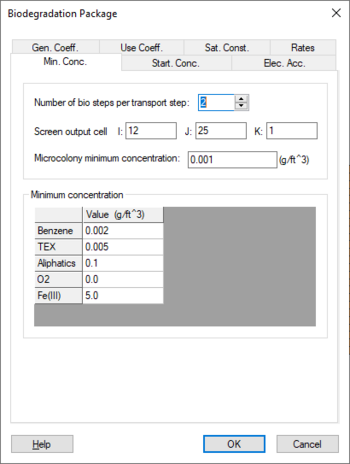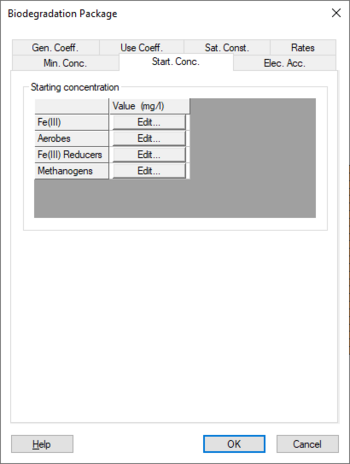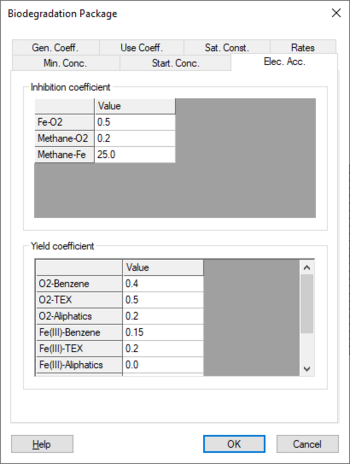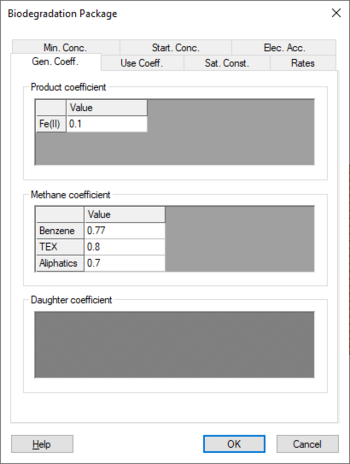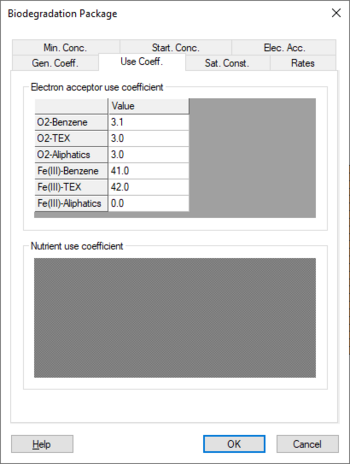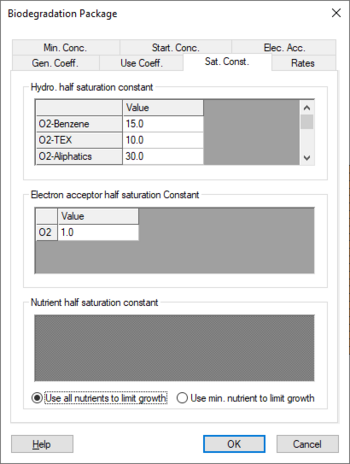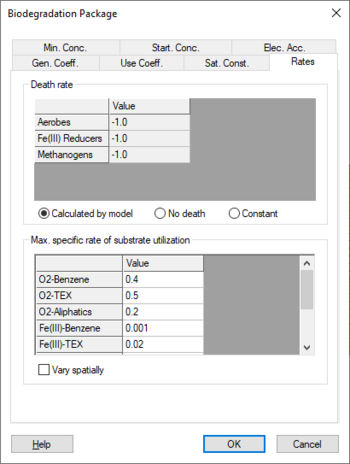GMS:SEAM3D Biodegradation Package: Difference between revisions
(→Rate) |
|||
| Line 36: | Line 36: | ||
==Rate== | ==Rate== | ||
*Death Rate | *Death Rate | ||
**Calculated by model | |||
*Calculated by model | **No death | ||
*No death | **Constant | ||
*Constant | |||
*Maximum specific rate of substrate utilization | *Maximum specific rate of substrate utilization | ||
**''Vary spatially'' – When turned on, allows spatial variability for the maximum specific rate of substrate utilization. Clicking the '''Edit''' button will open an array editor called the ''Maximum Rate of Substrate Utilization Array''. | |||
*''Vary spatially'' – When turned on, allows spatial variability for the maximum specific rate of substrate utilization. Clicking the '''Edit''' button will open an array editor called the ''Maximum Rate of Substrate Utilization Array''. | |||
[[File:BiodegradationPackage7.png|thumb|none|350 px|SEEM3D ''Biodegradation Package'' dialog showing the ''Rate'' tab]] | [[File:BiodegradationPackage7.png|thumb|none|350 px|SEEM3D ''Biodegradation Package'' dialog showing the ''Rate'' tab]] | ||
Revision as of 15:17, 8 September 2017
The Biodegradation Package is used with the SEAM3D model to set estimated parameters for the disintegration of materials by bacteria, fungi, or other biological means. Estimation of model parameters for biodegradation may be based on laboratory measurements, published values, and theoretical estimates. To produce maximum flexibility, SEAM3D allows parameters to vary across the aquifer layers and among the various substrates and electron acceptors for biodegradation.
The dialog is reached through the SEAM3D | Biodegradation Package command.
Minimum Concentration
- Number of bio steps per transport step
- Screen output cell
- Microcolony minimum concentration
- Minimum concentration – This table allows setting a minimum concentration for a defined species. If the concentration of defined species falls below a minimum value, then utilization of that species ceases.
Starting Concentration
The Start. Conc. tab allows setting an initial concentration for defined species. Clicking the Edit button will open an array editor called the Starting Concentration Array.
Electron Acceptor
This tab allows setting the inhibition coefficient and the Yeild coefficient for defined species.
General Coefficient
This tab allows setting the Product coefficient, Methane coefficient, and Daughter coefficient for certain species.
Use Coefficient
There are two use coefficients that can be defined: the Electron acceptor use coefficient and the Nutrient use coefficient.
Saturation Constant
- Hydrocarbon half saturation constants
- Electron acceptor half saturation constants
- Nutrient half saturation constant
- Use all nutrients to limit growth
- Use minimum nutrient to limit growth
Rate
- Death Rate
- Calculated by model
- No death
- Constant
- Maximum specific rate of substrate utilization
- Vary spatially – When turned on, allows spatial variability for the maximum specific rate of substrate utilization. Clicking the Edit button will open an array editor called the Maximum Rate of Substrate Utilization Array.
GMS – Groundwater Modeling System | ||
|---|---|---|
| Modules: | 2D Grid • 2D Mesh • 2D Scatter Point • 3D Grid • 3D Mesh • 3D Scatter Point • Boreholes • GIS • Map • Solid • TINs • UGrids | |
| Models: | FEFLOW • FEMWATER • HydroGeoSphere • MODAEM • MODFLOW • MODPATH • mod-PATH3DU • MT3DMS • MT3D-USGS • PEST • PHT3D • RT3D • SEAM3D • SEAWAT • SEEP2D • T-PROGS • ZONEBUDGET | |
| Aquaveo | ||
